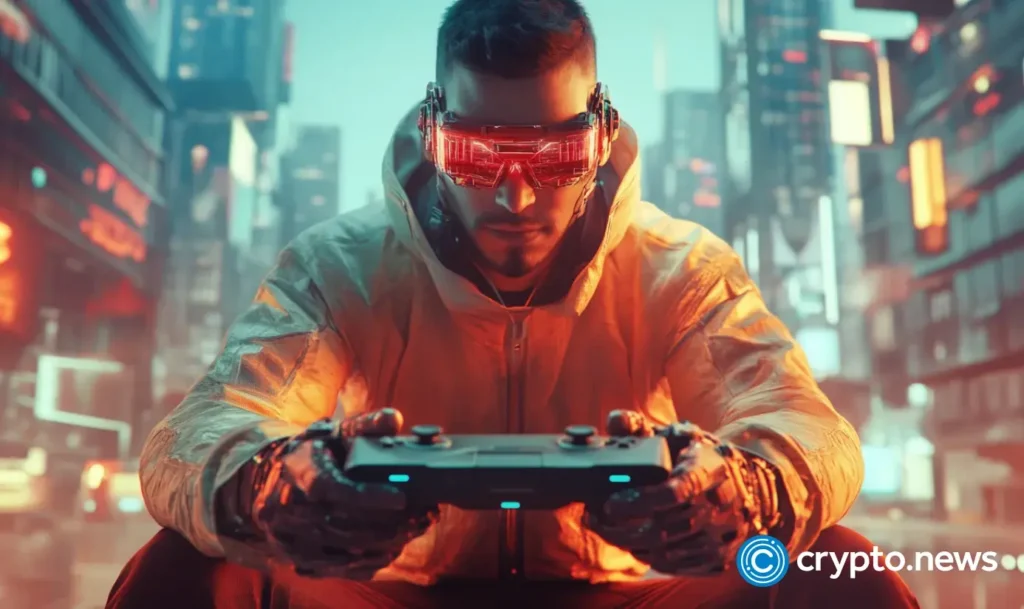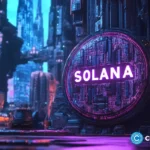Vladislav Ginzburg, founder and CEO of OneSource, says that blockchain gaming is ready to move past the hype.
- In crypto, hype runs ahead of real utility, says OneSource CEO
- Gaming should use blockchains for what blockchains are really good for
- Blockchains are slow, so we shouldn’t expect full games to run on them
Once hailed as the future of play, blockchain gaming has spent the last few years in the shadow of its own hype. Early ideas of player-owned economies, tokenized rewards, and interoperable universes never quite lived up to the promise.
Still, as the noise faded, more serious efforts are emerging, with those who remained focused on not speculation, but infrastructure. To address the current state of blockchain gaming, crypto.news spoke to Vladislav Ginzburg, founder and CEO of OneSource, a Web3 data, API and infrastructure platform focused on making blockchain games work.
crypto.news: Let’s start with the current state of blockchain gaming. It had a moment of hype, but it feels like that moment has passed. What’s your perspective?
Vladislav Ginzburg: That’s pretty typical of the blockchain ecosystem — hype often runs far ahead of reality. But that doesn’t mean there’s no reality behind it. It just takes longer to arrive. There’s that old saying: “A lie travels around the world before the truth can put its pants on.” In this case, the hype laps the world a few times before the actual utility catches up.
But the reality is starting to catch up. In the last quarter alone, there were about 4.5 million daily unique active wallets engaged with blockchain games. From our perspective at OneSource — where we focus on infrastructure for decentralized applications — gaming consistently takes up about 25% of activity across all dApps.
So yes, in the context of blockchain, that’s a big number. But if you zoom out to the entire gaming industry, 4.5 million users is a drop in the bucket. It’s tiny. The conclusion? Inside the blockchain world, gaming is real. It’s arrived. But how that scales into the mainstream gaming economy is still an open question.
CN: Blockchain gaming is back in the news, thanks to Valve changing how Counter-Strike 2 skins are created. What was your take?
VG: From a technical standpoint, enabling players to trade assets like skins as NFTs gives developers a huge benefit: they can offload that trading activity to a decentralized network. That means lower server costs and infrastructure burdens. Trading no longer happens on your central servers—it happens on-chain.
And beyond that, it opens up entirely new marketplaces. Think beyond just skins—think of all types of in-game content. If a game lets users mint, trade, and sell assets, then others can also start creating and contributing assets.
Now, from a marketing perspective, that’s incredibly interesting. Imagine a developer wants to attract holders from a community like Bored Ape Yacht Club. They can offer tools or licensing frameworks so that the community can import their IP—avatars, themes, skins—directly into the game. Suddenly, a game that didn’t previously appeal to that audience now becomes meaningful to them.
That’s a win-win: the developers reduce infrastructure costs and attract niche, loyal player bases through Web3 communities. That said, gamers themselves may not always respond enthusiastically. There’s still a lot of NFT fatigue out there, and developers need to figure out how to make people care again.
CN: If you’re trying to convince gamers to care about tokenized assets or blockchain gaming in the long term, what’s the real benefit to players?
VG: We’ve been building in this space for years—OneSource used to be called Block Party, and we were early movers on things like fan engagement tokens and record label partnerships. So we’ve seen this from a lot of angles.
I like to simplify it this way: blockchains are really good at very specific things. They’re not magic. But what they do well, they do better than anything else.
For example, blockchains are the best public scoreboards we’ve ever built. They’re great at transparently tracking points, tokens, ownership, movement, and transaction history. They’re a perfect base layer for validating truth in a multiplayer context—whether that’s winning, losing, cheating, or proving ownership.
So from a gamer’s perspective, that might mean transparent match records and rankings, proven history of in-game achievements, and immutable ownership of your character, skins, inventory, or even identity.
It solves for things like cheating, bans, and centralized control. And yes, there’s also the ability to transfer value—whether that’s between players or between a game and its community. We saw this even before blockchain, with people selling Second Life or WoW items on Craigslist. Blockchain just formalizes that economy.
CN: Another big issue is aggressive monetization in games. Gamers have been complaining about that since the early days of mobile. Do you think blockchain and NFTs address that problem—or make it worse?
VG: That’s a great question. I try to look at it from both sides—developer and player. When you say “aggressive monetization,” I immediately think of play-to-earn. From a gamer’s point of view: it’s exhausting. No one wants to grind just to extract value. It makes the game feel like work.
From the developer’s side, though? I totally get it. They have investors breathing down their necks. They’re told, “Go monetize it now.” So naturally, their first experiments with blockchain and tokens end up being tied to monetization.
But of course, players hated it. That’s the pendulum of the industry—we overcorrect one way (play-to-earn), the community pushes back, and now we’re swinging back to ask: What do gamers actually want from Web3?
What I’m seeing now from an investment perspective is a huge shift away from token economies and into infrastructure. Capital is going toward solving technical challenges: scale, mobile performance, and throughput. That’s where the focus is now. And I think that’s a very healthy move.
CN: Can you dig deeper into that infrastructure shift? What are the technical bottlenecks, and who’s solving them?
VG: Sure. Let’s start with what games need. Multiplayer online gaming has always been about massive scale. That’s right there in the name: “massively multiplayer online games.”
Now imagine trying to run a massive online game on-chain. Most Layer 1s just aren’t designed for that. It’s expensive, slow, and often unusable. Remember when CryptoKitties crashed Ethereum? That was years ago—and the underlying challenges are still there.
That’s where infrastructure comes in. You’re now seeing serious progress. For one, Solana with Firedancer is promising major throughput upgrades. On the other hand, Immutable is building specific tooling for game developers. At the same time, MegaETH, which is currently mid-public sale, is focused on ultra-high transaction volumes. And at OneSource, we layer on top of those chains to push further scaling
We’re running experiments on testnets right now—trying to push millions of on-chain events per minute and see how much load we can actually handle.
Because here’s the reality: if every player login, loot box, or skin trade is an on-chain event, that’s millions of blockchain calls per second during peak gameplay. And most infrastructure just isn’t ready for that yet.
CN: Another thing that gamers are concerned about is games that players paid for being suddenly deleted and sunsetted. We’ve recently seen the “Stop Killing Games” initiative in the EU. Do you think that blockchains can help preserve access to older versions or single-player games?
VG: It’s a really cool use case. Let me give you both sides of it—glass half full and glass half empty.
Yes, if there’s a decentralized storage layer—like Storj, Filecoin, etc.—then developers can offload hosting of game versions to decentralized networks. That means reduced server costs, happier customers, and resilience even when a game is officially shut down.
If enough players care and are willing to contribute capital, that’s essentially a form of crowdsourced preservation. And that’s very Web3.
Still, that model only works if enough people care. Keeping a game version alive on a decentralized infrastructure isn’t free. It can be expensive. So you’d need a large, passionate niche to make it work. And while it’s easier for single-player games, multiplayer is a whole different animal—servers, matchmaking, etc.
So technically, yes—it’s possible. But it’ll take effort and coordination, and probably isn’t viable for every game.
CN: Is there anything else you’ve been thinking about recently that others in the space might be missing?
VG: Yes, actually. I still believe in the metaverse — not the buzzword, but the idea behind it.
I’m part of that generation that grew up with Second Life, World of Warcraft, and StarCraft — virtual worlds where you spent real time building things, developing characters, and grinding for gear. And when you really invest in those experiences, there’s something deeply meaningful about owning your progress and your identity in that world.
So for me, the idea of owning your in-game assets, avatars, or achievements — truly owning them — still matters. Even if the hype has passed, the work hasn’t stopped. A lot of serious builders are still here, still moving toward that future.
That’s their superpower. Let’s not ask them to be everything. They’re not game engines, they’re not user experience platforms, they’re not advertising tools. But when you need to record truth, to validate ownership, to transfer value transparently—blockchain is the best tool we’ve ever had.
So whether it’s for tracking leaderboards, enabling asset ownership, or proving you didn’t cheat, that is where blockchain belongs in gaming. Everything else can be built around that layer.



